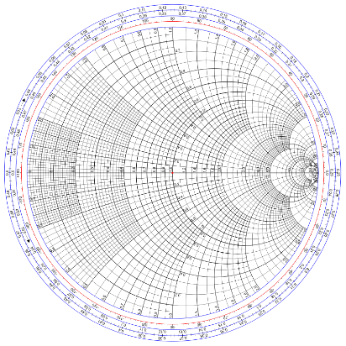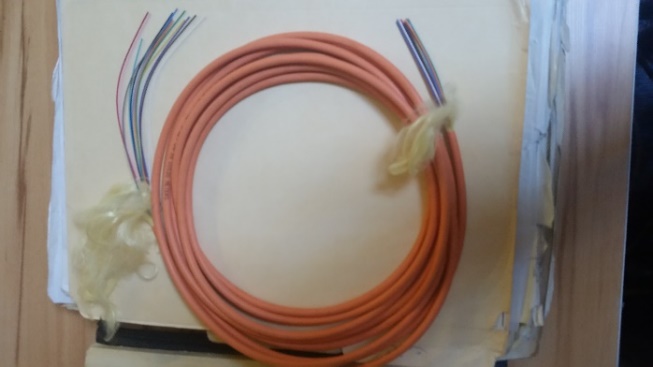1. BASIC CLASS NOTES FOR ELECTRICAL ENGINEERS
Note: Initially, this part of class notes were started in 1970, apology for inevitable delay.
1.1. Electrical Power
Q1. In HT 3- phase transmission lines, why we use 5-cables.
Q2. What is the purpose of Corona Ring?
Q3. Most power lines incorporate 50 or 60 cycle/sec filters. In spite of this when you cross HT lines, your receiver picks up noise. What are these noises?
Q4. What would happen if a 60-cycle transformer was used in 50-cycle line?
Q5. From the standpoint of instantaneous power, what advantage 3-phase have over single phase?
Q6. Prove that in a balanced 3-phase system, line-to-line voltage is: V l-l=√3 VΦ

1.2. Communications
Q1. What are the advantages of higher frequencies?
Q2. Suppose a channel was designed for a single frequency. What output looks like if second or third harmonics was pushed through it?
Q3. The maximum useable frequency (MUF) for shortwave reception is about 30 MHz, where does it come from?
1.3 RF Transmission Lines
Q1. If the attenuation constant of transmission media varies with frequency, what effect will it have on the output waveform?
Q2. Locate normalized, zn, min and max on Smith chart.

Q3. Why short stub is preferred over open stub for matching?
Q4. For stub matching using tuning post (screw), what effect has the depth of insertion if depth is:
- All the way down
- Quarter-wave down
- Small depth
1.4 Instrumentations
1. Match the followings for output impedance:
A. 50 Ohms Audio Frequency generator
B. 300 Ohms RF Generator
C. 600 Ohms H.F. Generator
1.5 Physics Optics
Q1. Light wave do not pass paper or other obstacles but RF do, explain.
Q2. Explain reflection, refraction, diffraction, and scattering.
Q3. Index of refraction is defined as: n = c/υ, (speed of light in vacuum/ speed of light in media), show that it is also given by: n=λo /λ (λo is the wave length in vacuum).
Q4. Light is a transverse electromagnetic wave in which Electric and magnetic field are perpendicular to each other. Can there be interference?
Q5. What is a polarizer, how is it made, and how can we test it?
Q6. What is the difference between Critical angle (θc, Total Internal Reflection angle), and the Brewster angle, θb?

Q7. Double Refraction. Figure below shows a double refraction in crystal Calcite that has strong double fractioning effect. Several other crystals have this property. Over lying this calcite over the line, it appears double; rotation of calcite through 180-degree, image appears single. This property has an important application, which will be shown.


Following figure shows a polarized beam with electric field, E, falling on a double refracting crystal such as calcite. Crystal has been cut along its optic axes, a challenging task for crystallography. Identification of optic axes requires another task. An optic axis of a crystal is a direction in which a ray of transmitted light suffers no birefringence (double refraction).


Rays will travel inside, then the two beams will emerge from the opposite side. If θ= 45 degree, the electic fields of the two refracted beams will be perpendicular to each other with equal amplitudes as shown above. In addition if calcit is cut quarter-wave length vertically, d=λ/4, (along the y-axis), the two emerging rays will be 90o out of phase, and thus can be represented by:
Ex = Em cos θ
Ey = Em sin θ
In time domain, we will have:
Ex = Em/√ 2 cos (ωt)
Ey = Em/√ 2 sin (ωt)
This stablishes a circle with radius Em, as:
(Ex)2 + (Ey)2 = (Em)2
Thus, we have obtained a circular polarizer filter, good for the designed wave-length.
Q5. What is a polarizer, how is it made, and how can we test it?
1.6. Fiber Optics
Q1. A fiber cable is shown below: On what principle does light propagate inside the cable?

Q2. Two fibers, single mode and multi-mode are shown below:
1. Which one carries more power?
2. Which one has higher bandwidth?
3. Which one may introduce more distortion?


Q3. Why shield like coax is not used in fiber cable?
Q4. A bundle fiber cable, which is used for computer communications, is shown below. There are 12 cables inside the protecting cover. Why there is no cross talk?

Q5. Telephone line can be tapped, how about fiber cable?
Q6. What is the order of magnitude of cable loss for a 10 km fiber in dB?
1. 7 Electromagnetic
Q1. What is the order of magnitude of earth’s magnetic field comparing with a 2 Watt speaker magnet which is about 10,000 Gauss?
Q2. How can we determine dielectric losses? What is its effect on the speed of electromagnetic wave?
Q3. What materials have index of refraction (n = c / υ) less than 1? Does it mean that wave travels faster than the speed of light, c, in these materials?
Q4. Consider two following lines carrying AC currents as shown, what would be the reading of a clamp type ammeter for each location for each configuration?

Q5. Ionosphere is composed of several gas layers as shown, which, changes during day, night, and seasons. Shortwave radio reception is carried out by sky wave, (reflections) which can span around the world. Microwave uses LOS (about 75km). What is the effect of rain on wave propagation?

Q6. The maximum useable frequency (calculated from ionosphere gas layer) is about 30 MHz This is the maximum frequency shown in shortwave radio if you have one. What happens if a system transmits above this frequency?
Q7. Does conductivity vary with frequency?
Q8. If the skin depth of copper at 60 cps taken to be 1/3 of an inch, what should be the wire diameter at microwave frequencies as compared to 60 cps?
Q9. Why RF is not suitable for ocean commination?
Q10. Is cable attenuation factor frequency dependent?
Q11. Copper is a good shield for electric field. Is it also good shield for magnetic field?
Q12. What material is good shield for both electric and magnetic field?
Q13. What is meant by displacement current?
Q14. What is meant dispersion?
Q15. Is Poynting vector conservative?
Q16. What is the effect of earth’s magnetic field on propagation of plane electromagnetic wave?
Q17. Can electric or magnetic field change the direction of moving particle? Remember old TV using vacuum tube.
Q18. Is the index of refraction, n, a real number or frequency dependent?
Q19. Does index of refraction (n =c/n) refer to phase or group velocity?
1.8. Antenna and Satellite
Figure below is a 5-element Yagi TV Antenna:

Q1. Determine length of monopole and dipole antenna if f = 600 MHz. Show input terminal for each.
Q2. What is the input radiation resistance of half-wave dipole, and monopole antenna?
Q3. What is a folded half-wave dipole, why is it usually used for TV reception?
Q4. What is the radiation impedance of folded half-wave dipole?
Q5. How can we achieve high gain with array antennas?
Q7. What is the effect of array length and spacing on radiation patterns?
Q8. Is there any radiation along the length of an element of array antenna?
Q9. Are the elements of an array connected to the mass?
Q10. For maximum power transfer which cable is best to connect to folded half-wave dipole, twin-flat or coax?
Q11. Figure below shows a satellite receiving dish. Where is the antenna located and is it half-wave dipole or monopole?

Q12. Two – satellites frequency system are in use. Why uplink and down link frequencies are different? Which system uses smaller dish?
400 GHz↓ 1200 GHz↓
600 GHz↑ 1400 GHz↑
Q13. What is the order of magnitude of power transmitted from the satellite before reaching ground?
Q14. Why all communication satellite are located on equator called Clark’s orbit, with 3 degree apart? How many satellites can be put on that orbit without cross talk? How this number can be increased?
1.9. Solid State and Physical Electronics
Q1. Energy of a free electron in one direction, x, is given by: εx = ½ m υx2 = ½ kT, what would be the total energy, i.e. ε =½ m υ2 =?
Q2. Explain ionic, covalent, and molecular bond.
Q3. What is the difference between conductor and semiconductor?
Q4. What is energy gap in semiconductor, insulator, and conductor?
Q5. What is meant intrinsic (pure) and extrinsic (doped) semiconductor?
Q6. Consider a silicon p-n junction (diode), what other elements are presented in each section?
Q7. What is a Schottky diode and what is its main applications?
Q8. Figure below shows velocity- electric field, υ-ε, curve of a Gunn diode? What semiconductor has such structure? Is it a p-n junction? What makes it to oscillate?

Q9. Figure below shows 1- v characteristic of a Tunnel diode which some is used in electronic circuits for oscillation. Which areas of the curve should it be biased for this purpose?

Q10. In A.M. detector circuit, Ge diode is preferred over Si, Why?
Q11. Consider a p-n-p and n-p-n transistors, which one is used for high power and which one is used at higher frequencies?
Q12. What is the advantage of narrow base transistor?
Q13. For normal bias, which capacitor should be considered for frequency response, Ceb or Cec?
Q14. Are above capacitors doping dependent?
Q15. What are the three important factors limiting the operation of a transistor at H.F.?
Q15. What are the two reasons for increasing saturation (reverse) current in a transistor?
Q16. Match the following: What are JFET, MOSFET, and MESFET?
RTL speed
DTL less loss
TTL
ECL
Schottky transistor
MOSFET
MESFET
BiCMOS